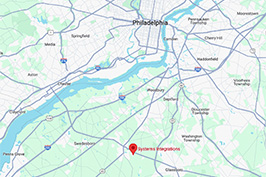FTC Safeguard rule and Physical electronic security
The FTC Safeguards Rule, implemented under the Gramm-Leach-Bliley Act (GLBA), is a regulation that requires financial institutions to develop and maintain a comprehensive information security program to protect the non-public personal information (NPI) of their customers. The rule applies to various types of financial institutions, including banks, credit unions, and other entities that offer financial products and services.
The purpose of the Safeguards Rule is to ensure that these institutions take appropriate measures to safeguard the confidentiality and security of customer information. This includes both electronic and physical security measures. While the rule doesn’t specifically detail the exact security measures that should be implemented, it does provide general guidelines on what the security program should entail. This can include:
- Risk Assessment: Financial institutions need to assess the risks to customer information in their possession. This involves identifying potential vulnerabilities in both electronic and physical systems.
- Designing a Security Program: Institutions are required to develop and implement a written information security program that outlines their security policies and procedures. This program should address both electronic and physical security.
- Employee Training: Staff members need to be trained on the security program’s requirements and practices to ensure they understand and follow proper security protocols.
- Overseeing Service Providers: If the institution shares customer information with third-party service providers, they must ensure that these providers have adequate security measures in place.
- Regular Monitoring and Testing: Continuous monitoring and periodic testing of security systems are essential to identify vulnerabilities and address them promptly.
- Adjustments and Updates: The security program should be regularly reviewed and updated as needed to adapt to changes in technology, threats, or the institution’s operations.
- Incident Response Plan: Financial institutions should have a plan in place to respond effectively to data breaches or security incidents, both in terms of electronic and physical security breaches.
Regarding physical electronic security, this refers to the measures taken to secure physical access to electronic systems and devices that store or transmit sensitive information. Here are some aspects of physical electronic security that might be relevant to complying with the FTC Safeguards Rule:
- Access Controls: Implementing controls to restrict physical access to servers, data centers, and other critical IT infrastructure to authorized personnel only. This could include keycards, biometric authentication, and surveillance systems.
- Data Center Security: Ensuring that data centers, where servers and other critical equipment are located, have appropriate physical security measures such as security guards, video surveillance, and intrusion detection systems.
- Device Protection: Securing computers, laptops, mobile devices, and other electronic equipment to prevent unauthorized physical access. This could involve cable locks, locking cabinets, and secure storage areas.
- Disposal of Electronic Devices: Properly disposing of electronic devices that store sensitive data to prevent data leakage. This might involve securely wiping data or physically destroying devices.
- Secure Work Areas: Ensuring that workstations containing sensitive customer information are located in secure areas and are locked when not in use.
Remember that specific security measures may vary based on the nature of the institution, the sensitivity of the information being handled, and the prevailing security best practices. It’s important for financial institutions to stay updated on regulatory requirements and industry standards to maintain a robust information security program that covers both electronic and physical security aspects.
Systems Integrations can work with you to design and implement security solutions that meet and exceed any regulatory requirements. Contact us today.


